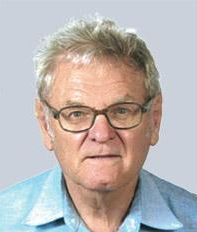Carbonates Petrophysics
OR
About the Course
AAPG members, view the course for free!
AAPG E-Symposium Series. The overall objective of this course is to review the petrophysics of carbonates, including the “new carbonates” in resource plays. The course will review core data, petrophysical comparisons, rock physics modeling (including pseudo logs and mechanical properties). You will learn:
Basic Petrophysics:
What do we need to know about carbonates?
What makes carbonates different?
Porosity Logs
Resistivity Logs
Gamma Ray
SP
Lithology of carbonates and well logs:
Calcium carbonate
Dolomitic carbonates
Clay minerals in carbonates
Cherty carbonates
Carbonate textures and well logs / petrophysics
Examples
Significance
Interpretations – The Basics with a focus on carbonates
Shale calculations
Porosity calculations
Resistivity/Porosity cross plots to solve Archie’s equation
Influence of clays
Saturation determination
Permeability estimates
Cores vs. well logs
Examples
Issues
Petrophysics of Carbonates as they relate to seismic
Examples
Key issues
Carbonate Petrophysics and Reservoir Characterization
Basic concepts and issues
For more lectures like this, join AAPG today
Your Instructor

Michael Holmes, with Digital Formation, Inc., Denver, CO, has a Ph.D. in Geology from the University of London and a M.Sc. in Petroleum Engineering from the Colorado School of Mines. He began his professional career with British Petroleum and then joined Shell Canada. Subsequently, he was a Research Scientist in Marathon's Denver Research Center. For a brief period, he was Exploration and Production Manager for Berry Wiggins in London. In 1974, Dr. Holmes joined H. K. van Poollen and Associates, Petroleum Consultants, as Vice President in charge of North American consulting activities. Additionally, Dr. Holmes was an instructor in a wide range of petroleum courses including geology, well logging, and petroleum economics. In 1978, Dr. Holmes established his own consulting practice, involving petrophysics, technical due diligence, consulting to the United Nations world-wide, expert witness activities, and instructor to IHRDC and the University of Brunei. In 1998, Michael combined consulting activities with software development, to form Digital Formation, Inc. From 1998 to the present, most of Michael's work has been petrophysical analysis and reservoir characterization in reservoirs world-wide. More recently, Digital Formation has developed extensive petrophysical algorithms including rock physics, capillary pressure, and the analysis of unconventional reservoirs.
